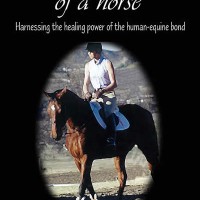With all of the media attention for Ann Romney’s horse Rafalca in the Olympic Games, the equestrian sport of dressage has certainly been brought to the forefront for many people who would otherwise have no idea what is meant by the oldest of all the equestrian divisions.
However, I’m not so sure all the coverage is, for one thing, the most accurate, or for another, the most positive. While Stephen Colbert’s depiction of “fancy prancing” is sure to bring some laughs, as of just today, an article in the New York Daily News slams Mrs. Romney’s horse for the failure of the Americans to medal on the world stage.
The reality is that dressage is hard… really hard. To really get a sense of just what this sport is like, imagine ice skating while holding a squirmy puppy and trying to navigate a pattern perfectly and beautifully. Well horses are much like puppies in that their attention span is not so good; they are incredibly reactive to human emotions and behavior, and in the beginning, they are not terribly coordinated.
This is also why it takes years — most trainers will say at least seven — to make a grand prix dressage horse. This not only means that the horse will take that long to develop physically or mentally in order to meet the demands of intense competition, but also that the partnership between the horse and rider will also take that long to develop. In order to be effective, the rider must know the horse implicitly, be able to predict his behavior, and have enough influence over it so as to convince the horse to perform under almost any circumstances.
And then the horse must also trust the rider implicitly. If something goes awry, after all, the horse doesn’t forget it. And then, the rider must work that much harder and longer to regain the horse’s trust.
So really, dressage, in many ways, is a measure of trust and communication between the horse and rider. Trust that is built through repeated exposure to stress inducing circumstances and situations for the horse, and communication that is fine-tuned constantly, until it is seamless.
For those who watch dressage, it is beautiful, yes, but for those who perform the sport that evolved from the training of horses for war, it is really a measure of themselves. “How trustworthy and how clear are you?” is the question only the horse can answer.
Best,
Claire Dorotik
